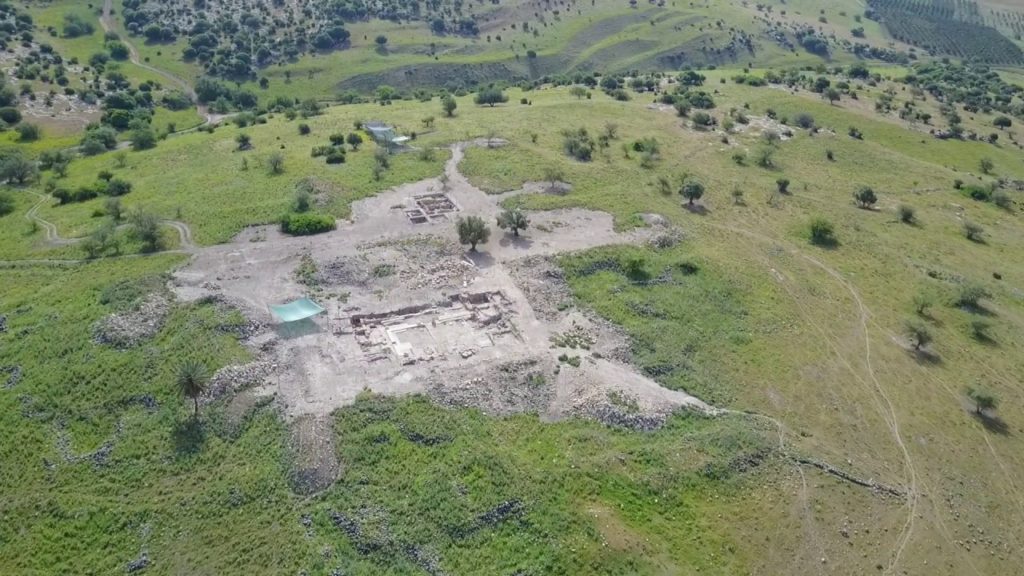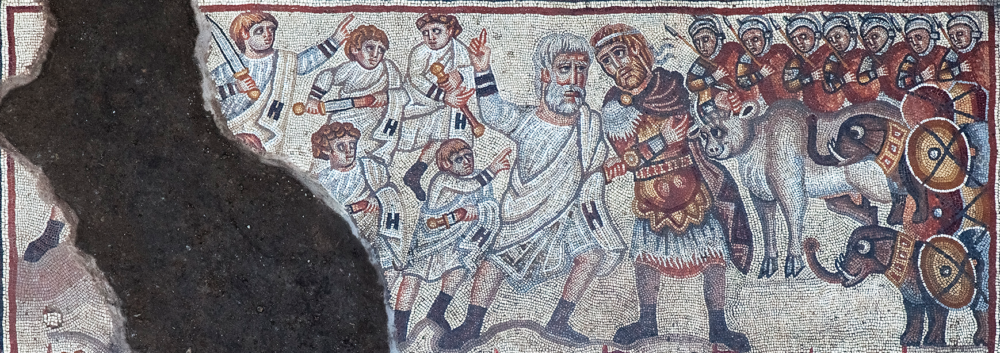Huqoq Mosaic

Huqoq is an ancient Israelite settlement spelled Hukkok in Joshua 19:34. This settlement was rediscovered in 1945, and a Huqoq synagogue was uncovered in 2012. Among the ruins of the synagogue lay an array of mosaics that are believed to date between the third and fifth centuries. The mosaics display a number of Biblical events such as this story of Noah, the Tower of Babel, the Red Sea crossing, the 12 Israelite spies into Canaan, the prophet Jonah, and Samson. What may be one of the most interesting of these mosaics is a panel depicting events that are not mentioned the Bible, but are found in the book of Maccabees. The story that this mosaic tells reads from bottom up.

The bottom left hand portion portrays dead soldiers that had been defeated in battle. There is a soldier dressed in Greek armor that had been killed by a spear. Next to the soldier on the right lay a slain battle elephant along with its rider. To the right of the slain elephant is a bull killed with spears.

Above the battle scene stand eight young soldiers holding the handles and sheaths of their swords as if ready to fight. In the center of this row of men is an old man sitting in a seat of authority. This man is the only figure making eye contact with the viewer and is the focal point of the mosaic. He represents either the general/king of these armed forces or the high priest of the temple. The latter is likely the case as this older man does not have a sword, but is instead holding a scroll. There is a burning oil lamp above the arch of each of these figures.

The upper portion of the mosaic depicts the high priest meeting with a commander of the Greek military. Each man has a standing army behind him. It is believed that the commander of the Greek forces represents Alexander the Great. He is wearing a diadem and a ribbon of leather around his head. Alexander the Great was the first to wear such decorations as a symbol of kingship and his successors continued the tradition. The Greek commander’s breastplate is Roman—the only kind of armor known to these mosaic artists at that time. The high priest is pointing to heaven indicating divine providence. The meeting appears to be tense but peaceful, and the Greek commander acknowledges the God of Israel by holding the horn of a bull—offering it to the high priest for use as a sacrifice. The high priest reciprocates with a gesture of acceptance with his left hand acknowledging the commander’s offering.

Images by Jim Haberman. Use permitted by Jodi Magness.